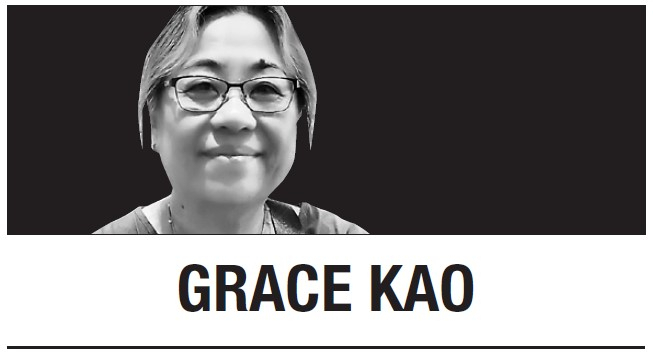
In Seoul, there are designer handbags everywhere. The Hermes Birkin for the ultimate flex. The Chanel Medium Double Flap for the very fancy. Lady Dior bags by Christian Dior are very popular. Of course there are the ubiquitous Louis Vuitton bags -- how many Speedy 30 bags can you see in a single day? Of course you also see Gucci, Prada, Bottega Veneta and sometimes Burberry too. I’ve seen YSL, Mulberry and Chloe here and there. I’m not here to judge Koreans’ love of designer bags. I love them, although I buy “pre-loved” ones. However, designer bags are less common in the US. One of my Korean friends who recently moved back to Korea after spending 10 years abroad said his single biggest culture shock was seeing designer labels everywhere. Almost every one of my friends and associates in Korea sport designer wallets and bags, but almost all of my US friends and colleagues do not. These two sets of individuals have similar educational and income backgrounds.
What is striking is that in South Korea, the land of designer handbags, the story about Korean first lady Kim Keon Hee receiving a gift from pastor Choi Jae-young of a Lady Dior bag has enjoyed a remarkably long shelf-life. She was secretly filmed by him while receiving this gift valued at 3 million won or about $2,294, exceeding the legal limits of gifts that politicians are allowed to receive. She was interrogated for 12 hours. While $2,294 may seem like an exorbitant amount for a handbag, it is not. Hermes Birkins are difficult to secure, and they can easily cost $25,000. A Chanel Large Classic Flap runs about $12,000. A new Louis Vuitton Speedy Soft 30 Crafty is $3,250 while a traditional Monogram Speedy 30 is just under $2,000. In Korea, these prices are even higher than the US prices I listed. Given that many Korean consumers might already have a sense of the prices of luxury designer handbags, why are they so angry about the Lady Dior bag, which is one but compared to some is more modest?
According to a CNBC article in 2023, South Korea was the biggest per capita spender on luxury items worldwide. Specifically, Koreans spent $325 per capita compared to $280 per capita by US consumers on luxury items. Compare this figure with the median household incomes in Korea and the US. According to the US Census Bureau, the median annual household income in 2023 in the US was $80,610. Statistics Korea reported that in the first quarter of 2023, the median monthly income was 5.122 million won, or 61.464 million won annually, which equals $46,774. Per capita, Koreans spend a far larger portion of their incomes than Americans on designer products despite earning much less.
In fact, there are many stories in Korea about expenses on designer bags. A 2013 article in The Korea Times about Korea’s obsession with designer bags stated that Louis Vuitton bags were known as the “3-second bag” because you could see one every three seconds in Seoul. Another 2013 article in The Korea JoongAng Daily called it “the Ji-young bag” -- as ubiquitous as the common name, “Ji-young.” In The Korea Times article, the writers quote Kim Jin-sook, an office worker in her early 30s who earned about 1.5 million won monthly (or $1,400 at the time of the article), and spent half of her salary saving for a new designer bag. She opts out of other leisure spending to do so because the bag represents “the only joy in my life.” I once heard a story about a fight between a Korean couple over a Chanel bag. This argument eventually led to their divorce.
I wonder if some middle-class Koreans see designer products, including handbags, as a "necessary" expense in highly competitive Korean society. Individuals have to signal to others that they are successful -- for women, there is no easier way to flaunt this than with a handbag. Handbags are items that many women carry anyway, so one can justify their existence in terms of their functionality. Of course, designer bags serve as status symbols. What happens if everyone has a designer bag? Carrying a Louis Vuitton bag no longer signals exclusivity if everyone has one, but having a no-name bag could alternatively be stigmatized. Or, the hierarchy among the designer labels kicks in.
Perhaps it is partly because the average Korean must scrimp and save for such designer accessories that many resent the fact that the first lady, who is already privileged and wealthy, allegedly received a bag for free and for unspecified political favors. Compared to some crimes, including those of politicians, that are reported in Korea, receiving a Lady Dior bag might pale in comparison. However, this story clearly struck a nerve. It was not a good look for President Yoon Suk Yeol who, at a news conference in early May 2024, had to address the incident just a few months before the government announced that they were raising the monthly basic old-age pension for seniors to 400,000 won (or about $304). Individuals receiving the minimum old-age pension would have to save their entire pension income for 7.5 months to buy that Lady Dior bag.
Grace Kao
Grace Kao is an IBM professor of sociology and professor of ethnicity, race and migration at Yale University. The views expressed here are the writer’s own. -- Ed.







![[Today’s K-pop] Blackpink’s Jennie, Lisa invited to Coachella as solo acts](http://res.heraldm.com/phpwas/restmb_idxmake.php?idx=644&simg=/content/image/2024/11/21/20241121050099_0.jpg)